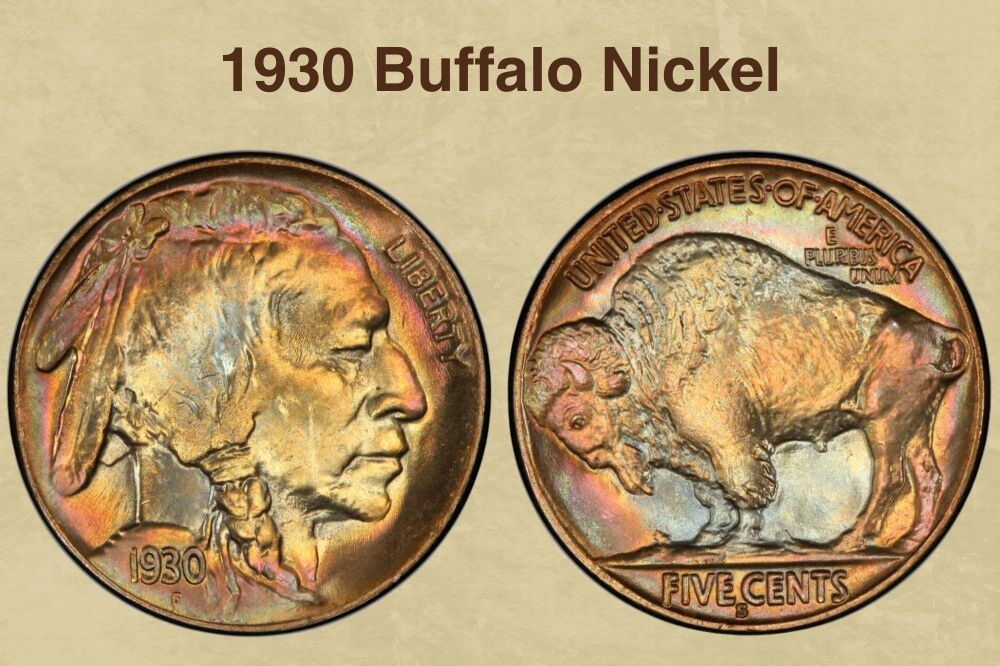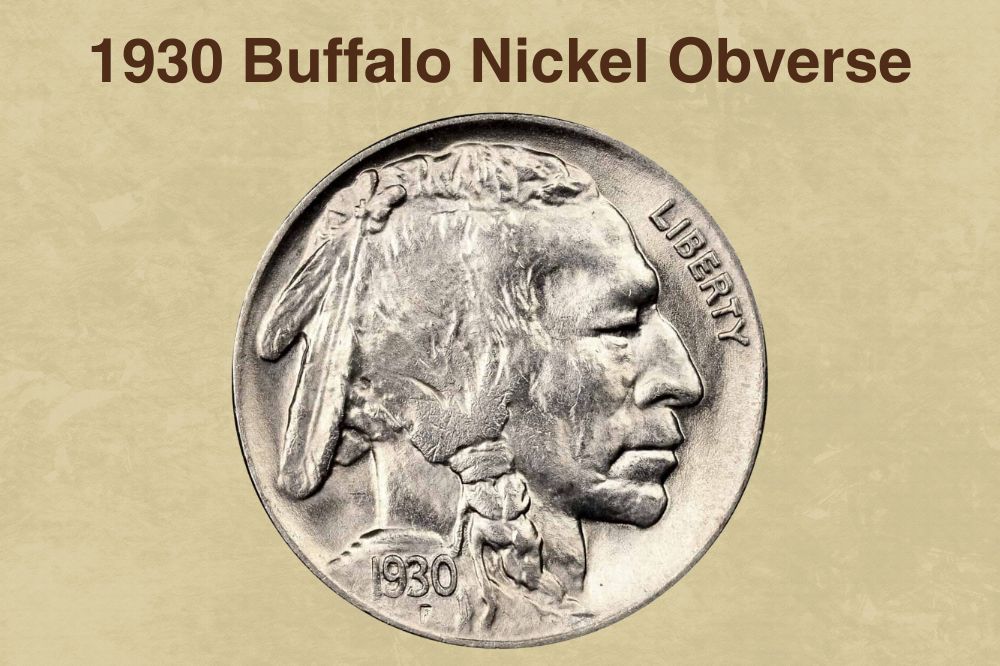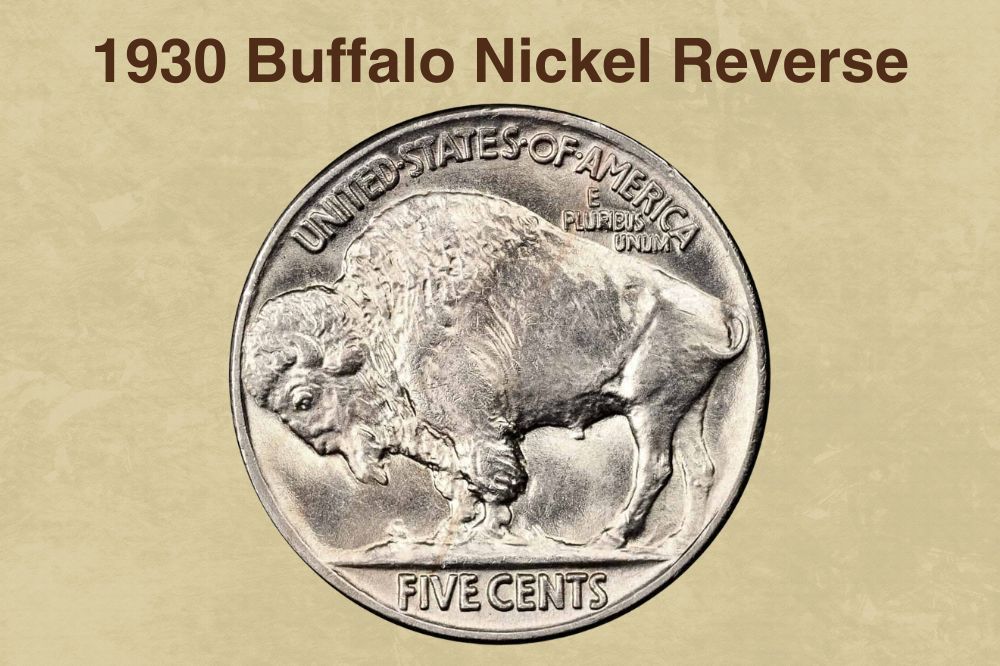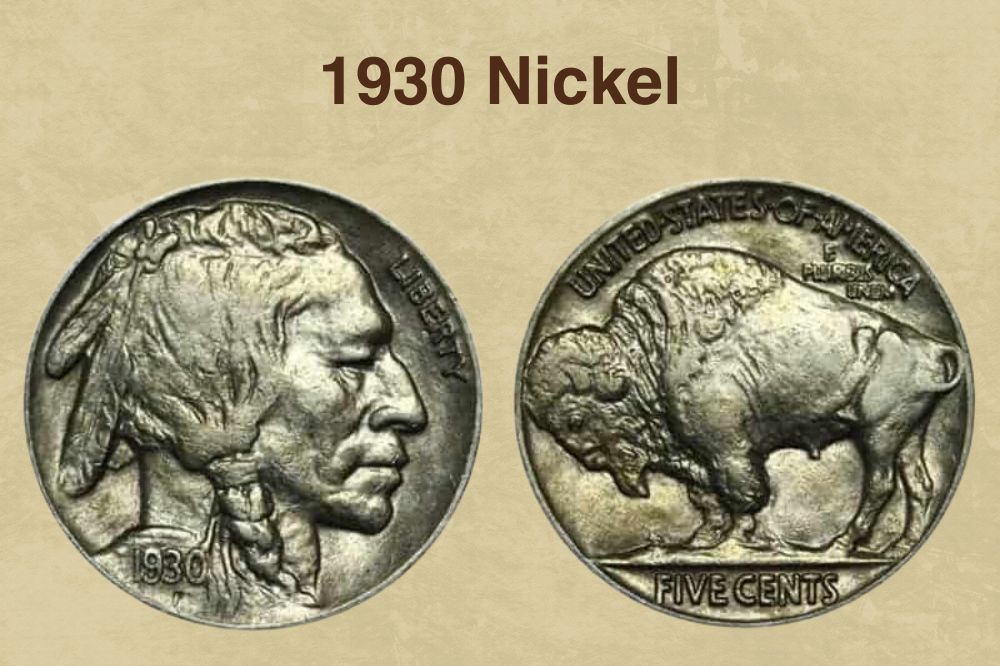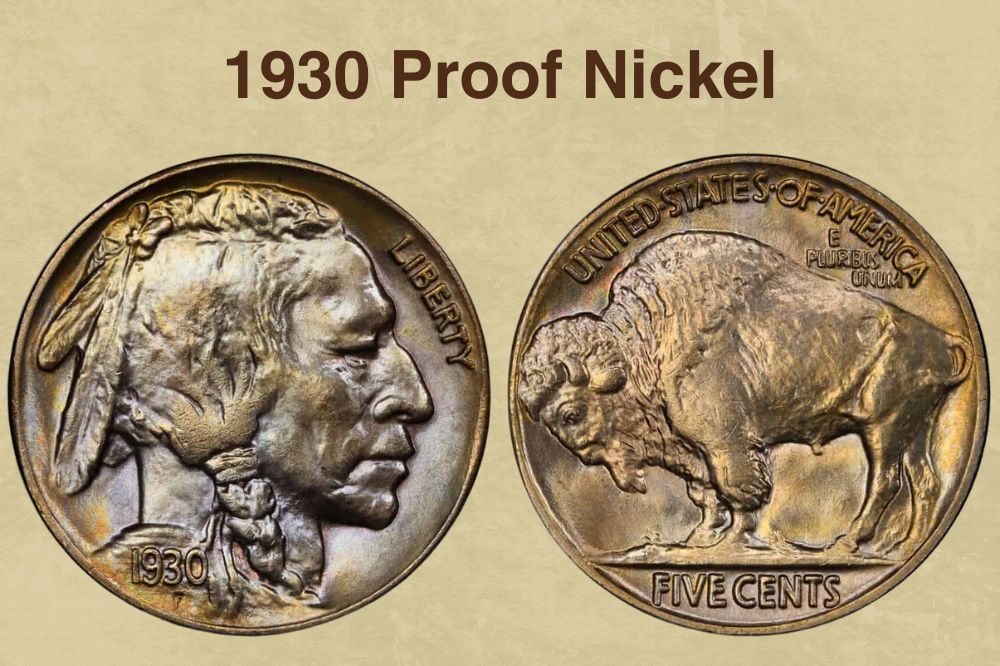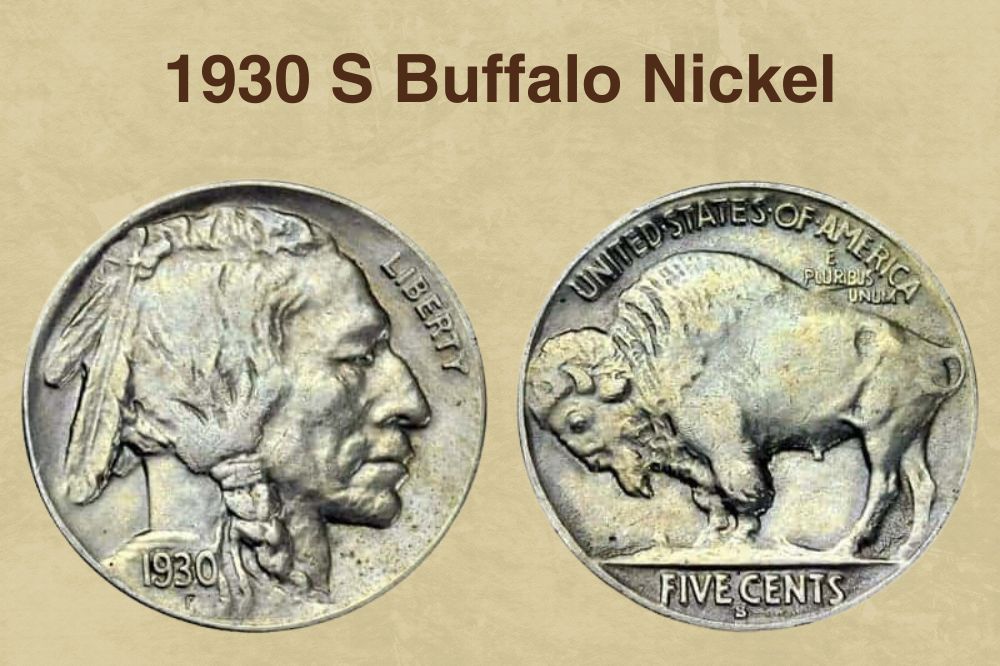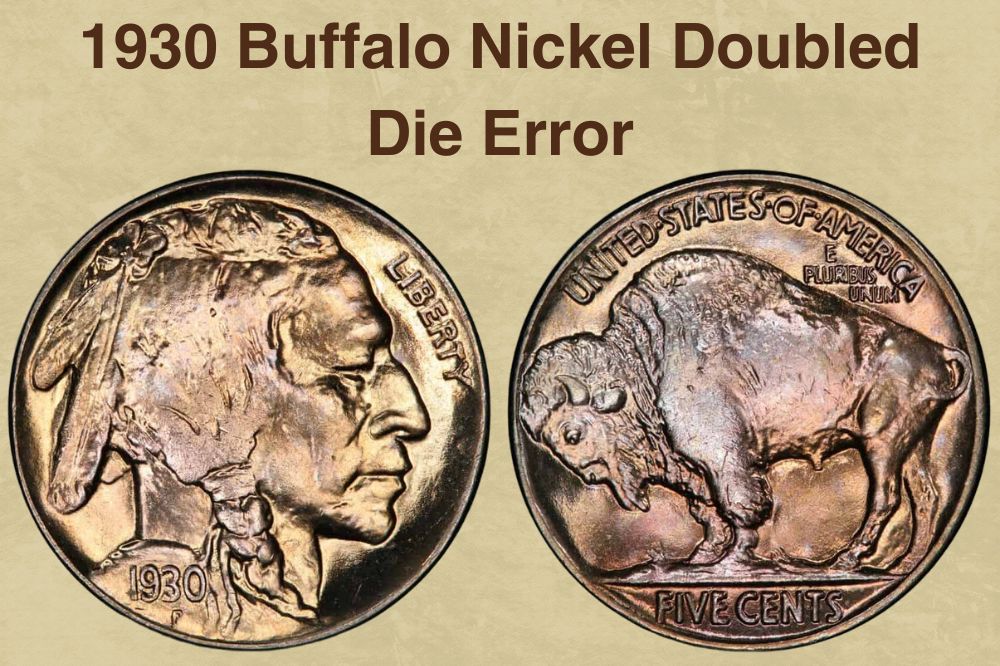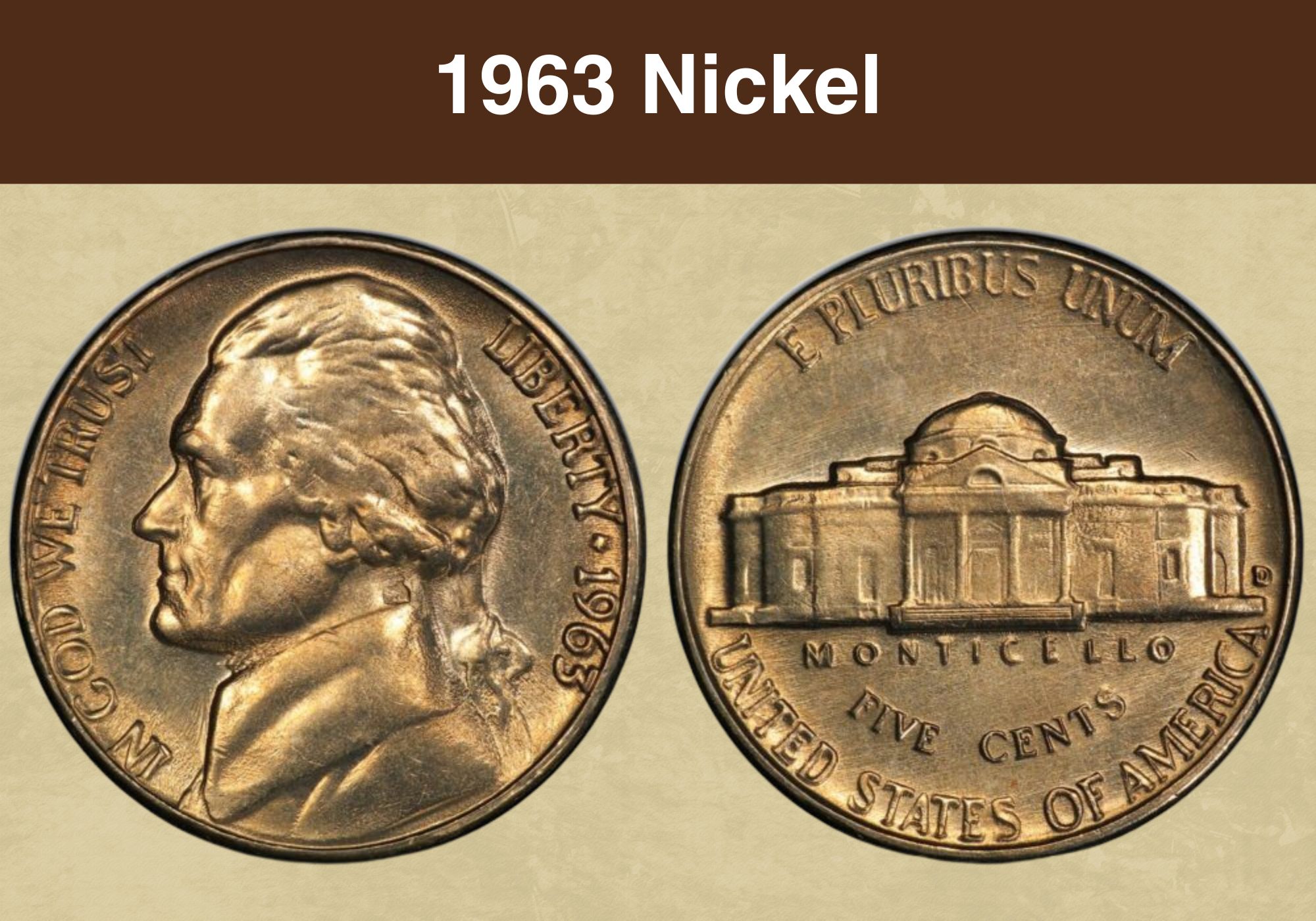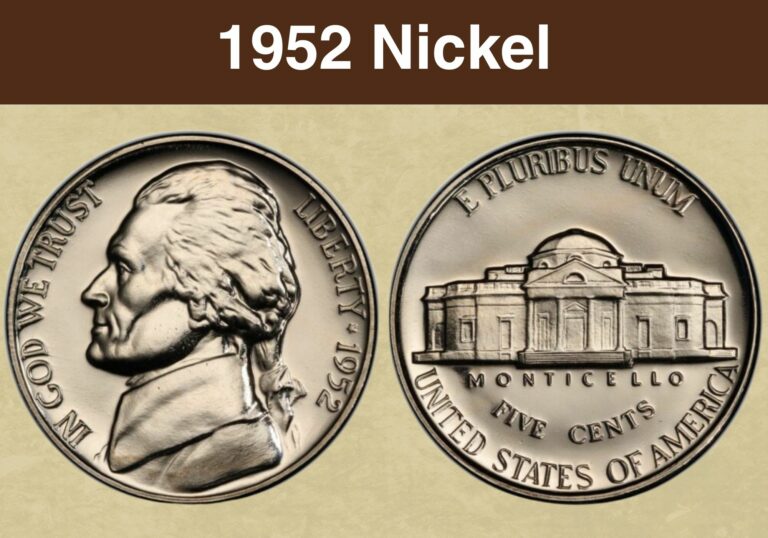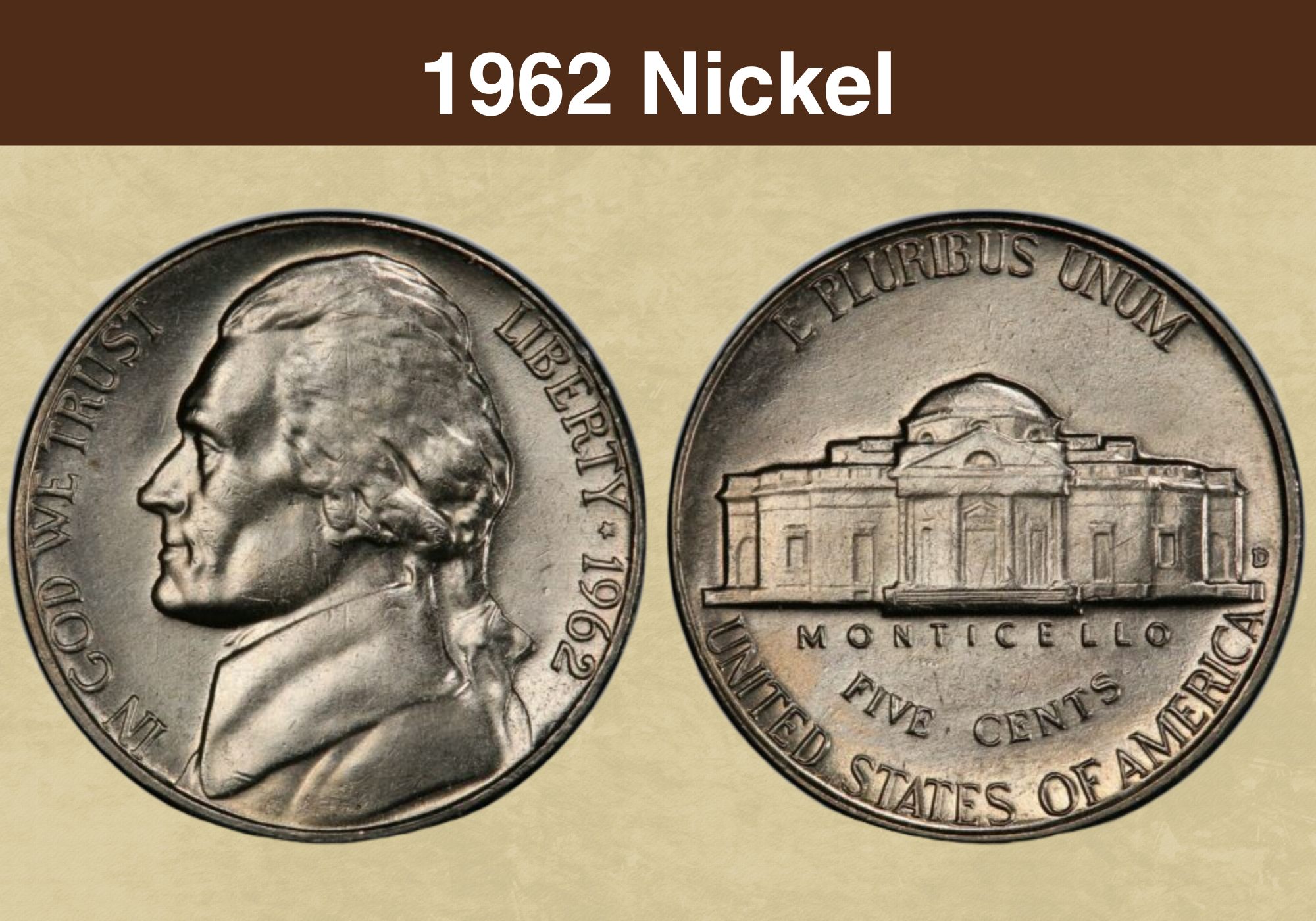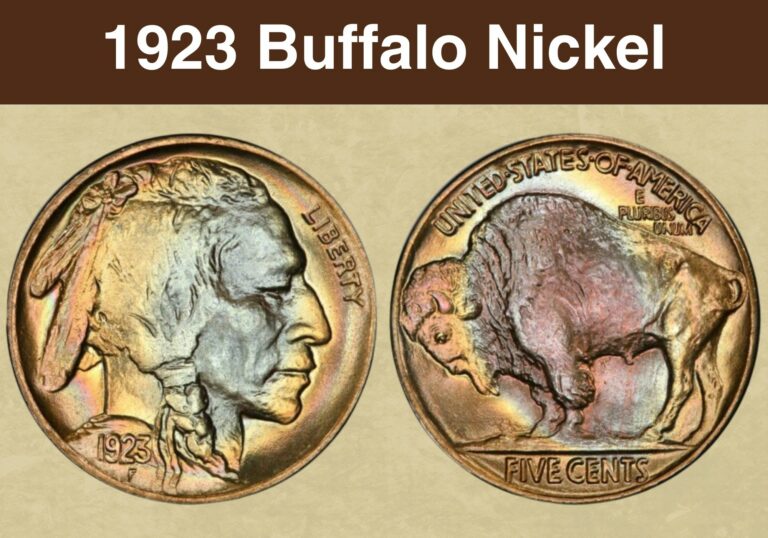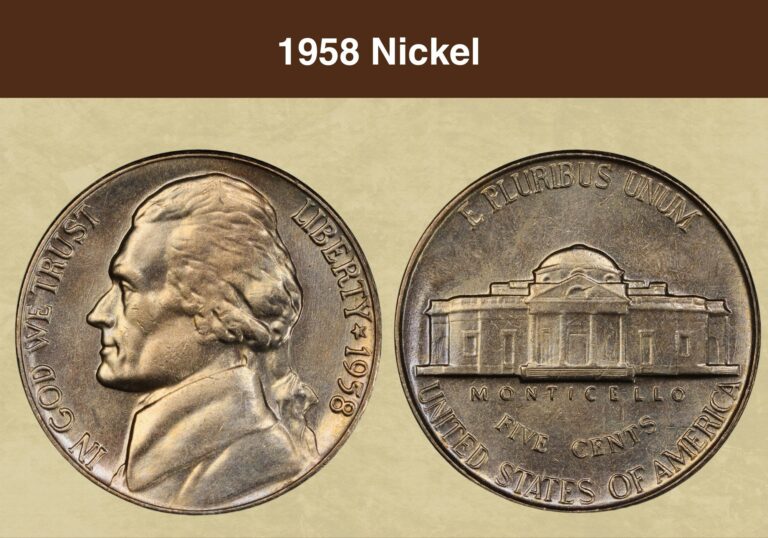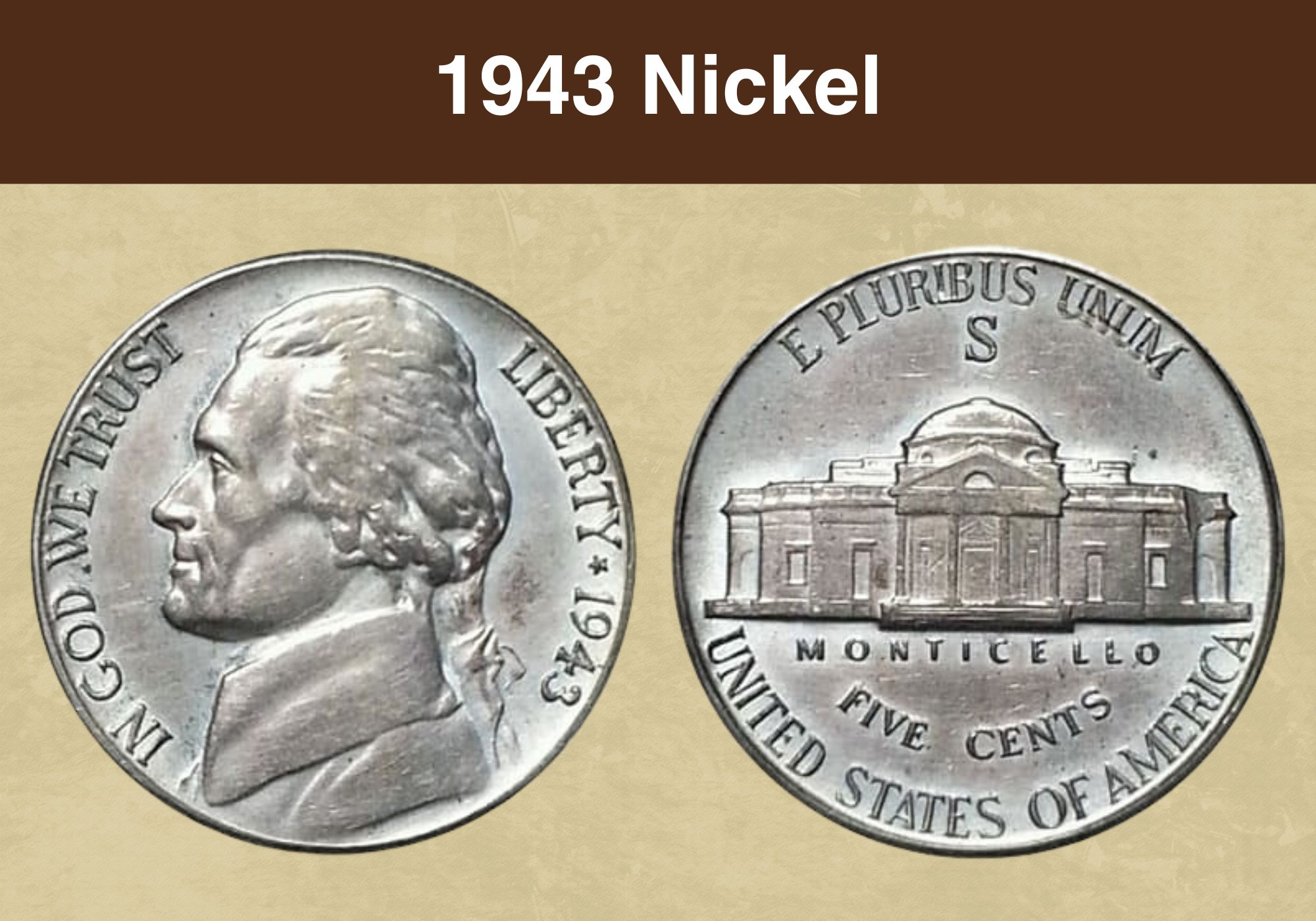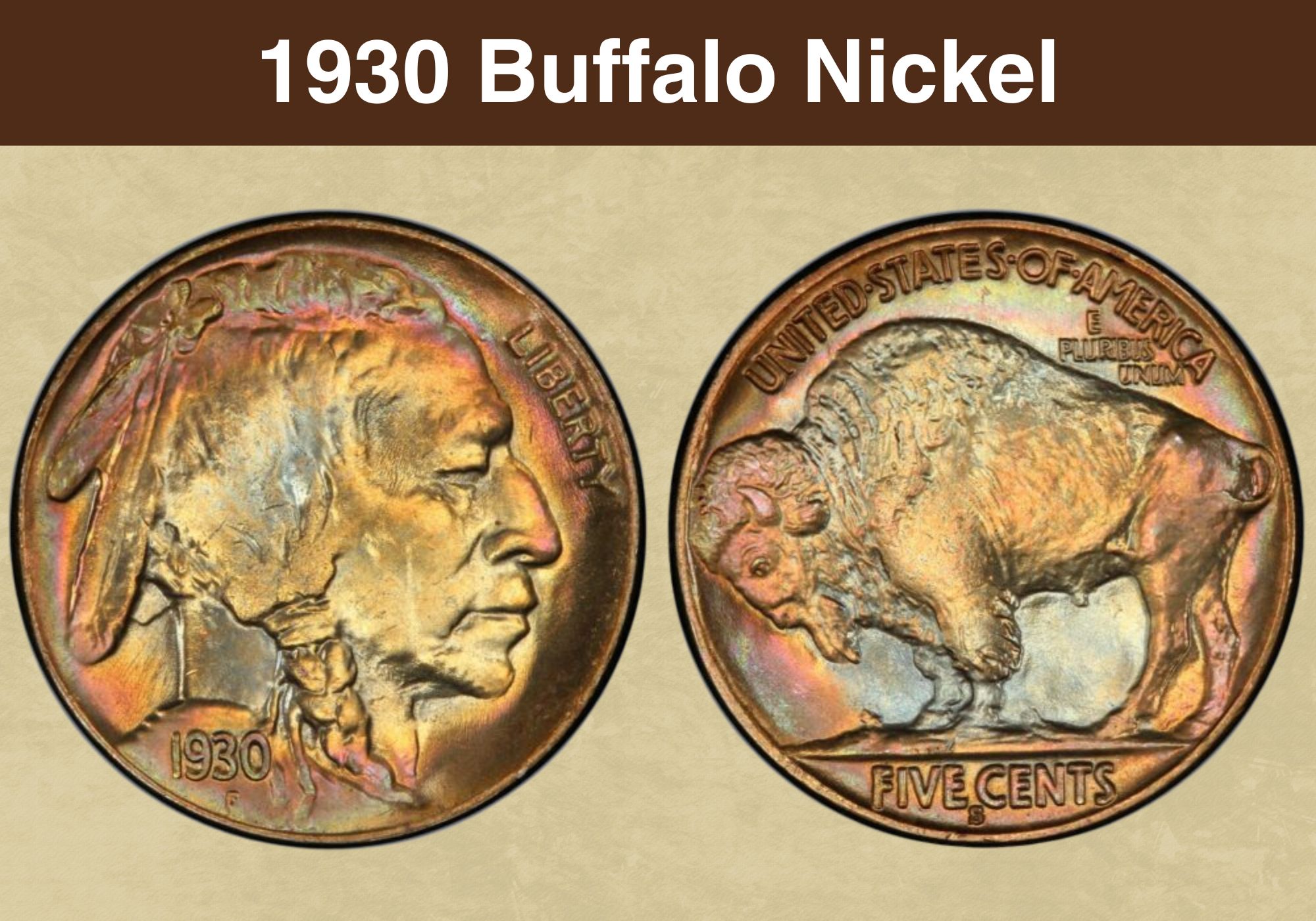
Coin Value Contents Table
- 1930 Buffalo nickel value Chart
- History of the 1930 Buffalo/indian head Nickel
- 1930 Buffalo nickel Types
- Features of the 1930 Buffalo/indian head Nickel
- 1930 Buffalo Nickel Grading
- 1930 Buffalo Nickel Value Guides
- 1930 Buffalo nickel Value
- 1930 Buffalo nickel (proof)
- 1930 S Buffalo nickel
- Rare 1930 Buffalo Nickel Errors List
- Where to Sell Your 1930 Buffalo Nickel ?
- FAQ about the 1930 Buffalo Nickel
The first Indian Head nickels were realized into circulation on March 4, 1913. The fact they depicted two genuinely American themes made them immediately popular. The buffalo, a totemic animal in Native American culture, represented leadership spirit, strength, and unity. On the other hand, an Indian chief honored Native American people.
Unfortunately, the first problems appeared right away because the raised design was impractical for minting. After corrections, the US Mint made redesigned coins, but issues with this series had never been solved with complete success. However, this series is popular and collectible, keeping the 1930 Buffalo nickel value stable for years.
1930 Buffalo nickel value Chart |
||
| Condition | 1930 nickel | 1930 S nickel |
| Good | $1.46 | $1.46 |
| Very good | $1.75 | $1.75 |
| Fine | $2.87 | $2.87 |
| Very fine | $4.63 | $4.63 |
| Extra fine | $13 | $17 |
| AU | $28 | $40 |
| MS 60 | $40 | $75 |
| MS 63 | $85 | $138 |
History of the 1930 Buffalo/indian head Nickel
The Buffalo nickel’s historical significance is in the design that represents America’s heritage. Despite numerous problems with minting, these beautiful coins are highly collectible nowadays primarily because of these themes.
The Buffalo nickels’ official name is Indian Head nickels. James Earle Fraser was honored to create this coin when the time came to say goodbye to the Barber’s Liberty Head coin.
Most officials and American people were delighted with the new coins’ look. Unfortunately, their appearance was the only good thing about this coin. The design was challenging to mint, the dies wore out quickly, and the result was nickels with the date and denomination that wore out and faded quickly.
Therefore, everyone was satisfied when the Jefferson nickels replaced them after the required 25-year period. Interestingly, such impractical coins for everyday use became excellent collectibles and classical American coinage.
1930 Buffalo nickel Types |
||
| Location | Year | Minted |
| Philadelphia | 1930 nickel | 22,849,000 |
| San Francisco | 1930 S nickel | 5,435,000 |
| Total | / | 28,284,000 |
The Buffalo nickel history began when President Roosevelt concluded that existing American coinage was unimaginative and artistically poor quality. Therefore, the US Mint started changing the design of all coins that circulated for at least 25 years. One of them was Buffalo nickel.
The idea began to turn into reality in 1909 with Lincoln cent. The first Buffalo nickels appeared in 1913, but it was the beginning of numerous redesigns. The coin look underwent a few modifications in the first four years, particularly in the lettering thickness and the land the bison stood on.
Despite all the effort, this design caused the dies to wear out five times faster than usual. Additionally, the excellent and beautiful coin look lasted only a short period and started losing design details quickly after releasing into circulation.
Also read: Top 10 Most Valuable Nickels Worth Money
Features of the 1930 Buffalo/indian head Nickel
The Buffalo nickels’ official name is Indian Head nickels. These cupronickel coins were minted from 1913 to 1938 after James Earle Fraser designed them. Compositions on both coin sides show crucial American themes, an Indian chief and bison. Interestingly, these coins are still current because the US Mint has never recalled them.
The obverse of the 1930 Buffalo nickel
The 1930 Buffalo nickel is one of the coins with the simple but beautiful obverse, depicting an Indian chief with mohawk-style hair and a braid. Interestingly, the person shown on the coin never existed, but a designer combined three Native American chiefs to get this portrait.
You can see three feathers in his hair, leaving room for the famous Two-feather coin error. Besides the central figure, you can also see the date in the lower left corner and the letter F under it. It is James Earle Fraser’s initial. The word LIBERTY is placed in front of his face.
The reverse of the 1930 Buffalo nickel
You can differentiate two Buffalo nickels based on the reverse. Both depicted an American bison, but the animal stood on raised ground in the first variation.
Another coin option appeared because the original design was impractical for minting and worn out quickly. Therefore, the designer made changes, and new coins came with the animal standing on flat ground.
Besides the bison occupying most of the coin reverse, there are also crucial inscriptions, including:
- UNITED·STATES·oF·AMERICA
- E
- PLURIBUS
- UNUM
- FIVE CENTS
- The mint mark on coins produced in San Francisco
You can find several controversies regarding the model Fraser took as the basis to create the bison on the reverse. The artist claimed it was Black Diamond from the Bronx Zoo.
The problem was that such an animal never lived in this Zoo, but one bison with this name was a resident of Central Park Menagerie near the designer’s studio. No one knew why this disinformation occurred, and none of a handful of existing bison sketches could solve that mystery.
1930 Buffalo nickel |
|
| Face value | Five cents ($0.05) |
| Shape | Round |
| Compound | Cupronickel (75%: 25%) |
| Coin thickness | 1.95 mm (0.0768 inches) |
| Coin diameter | 21.2 mm (0,83464 inches) |
| Coin weight | 5 g (0,17637 ounces) |
| Edge | Plain |
Other features of the 1930 Buffalo nickel
The 1930 Buffalo nickel is a cupronickel coin with a face value of five cents and a plain edge. Each coin weighs 5 g (0,176 ounces) and has a diameter of 21.2 mm (0,835 inches). Its thickness is 1.95 mm (0.077 inches).
Also read: Top 17 Most Valuable Buffalo Nickel Worth Money
1930 Buffalo Nickel Grading
Grading the 1930 nickel is possible in two ways. You can do it yourself by using given descriptions and ranking your coin on a 1- to 70-grade scale. Another way is to have it professionally graded, which is a better option if you have a specimen in the mint state or a potentially valuable error.
| # | Grade |
|---|---|
| 1 | Basal State-1 |
| 2 | Fair |
| 3 | Very Fair |
| 4, 5, 6 | Good |
| 7, 8, 10 | Very Good |
| 12, 15 | Fine |
| 20, 30 | Very Fine |
| 40 | Extremely Fine |
| 50 | About Uncirculated |
| 60 | Mint State |
| 65 | Mint State |
| 70 | Mint State |
Please check our grading guides to know your coin scale, It’s the necessary step to know the exact value of your coin.
Check out now: How to Grade Buffalo Nickel?
1930 Buffalo Nickel Value Guides
Two mints, from San Francisco and Philadelphia, minted 28,284,000 Buffalo nickels in 1930. While the first mint issued coins with the S mint mark, the second released only nickels without the mint mark. The US Mint didn’t produce proof nickels for almost 20 years, so there are no such coins from 1930.
1930 Buffalo nickel Value
With 22,849,000 nickels minted in 1930, this mint produced about four times more coins than the one in San Francisco. Such a high production keeps their value low, although these coins are over nine decades old.
Nickels in circulated grades are worth $0.45 to $13, and only those ranking AU are slightly more expensive. You can count on $16 to $26.40 for such pieces. Most Buffalo nickels in the mint state are more or less affordable. Therefore, you should set aside $24 to $350 for MS 60- to MS 66-graded ones.
On the other hand, the 1930 MS 67 nickels can be pricey because of their rarity, and most are worth $1,900 to $2,600. Moreover, the most expensive specimen is the one in MS 67+ rank, sold at an auction organized in 2020 for $15,600.
1930 Buffalo nickel (proof)
The US Mint produced Buffalo nickel proofs only from 1913 to 1916 and 1936 to 1937. In other words, it is impossible to find coins intended for collectors with the 1930 minting year on the obverse. The only way to enrich your collection is to look for specimens from regular strikes in the best possible grade.
1930 S Buffalo nickel
Precisely 5,435,000 Buffalo nickels came from San Francisco in 1930. You can find these coins in a wide grade range, dictating their value. Used coins typically cost $0.45 to $60, while the value of those in the mint state depends on their appearance. For instance, you need to pay:
- $70 to $84 for the nickel in MS 60 grade
- $76 to $91 for the nickel in MS 60 grade
- $ 92 to $110 for the nickel in MS 60 grade
- $130 to $156 for the nickel in MS 60 grade
- $210 to $252 for the nickel in MS 60 grade
- $389 to $456 for the nickel in MS 60 grade
- $660 to $775 for the nickel in MS 60 grade
The most valuable are nickels with MS 67 rating that can reach $8,000 to $13,000 at auctions. In fact, the costliest piece is the 1930 S MS 67+ Buffalo coin. Its auction record from 2017 is $30,550.
Also read: Top 17 Most Valuable Jefferson Nickels Worth Money
Rare 1930 Buffalo Nickel Errors List
Most error coins result from problems in minting. The 1930 Buffalo nickels are well-known after the unique Two-feather errors, but the list of imperfect coins produced this year doesn’t end there. Let’s take a look.
Two-feather coin
The original Buffalo nickels depict an Indian head on the coin obverse with three feathers in his hair. However, the machine in the San Francisco mint erased one of the feathers during coin polishing, leaving only two.
Most such error coins are in low grades, with a price range from $65 to $576. However, experts estimate scarce MS-rated pieces at $2,750 to $3,300. It is justified because one collector got one on eBay after paying $4,227 in 2023.
Doubled die
The doubled die 1930 nickel occurred when the dies left a slightly doubled design on the coin surface. The error is visible on inscriptions or images. You can find more or less worn-out coins for $50 to $390, while most uncirculated pieces cost $350 to $540. Only those in MS 65 and MS 66 cost over $1,000.
The auction records are different for specimens featuring this error type on one side or another. One collector paid $3,290 in 2014 to get one DDR Buffalo coin in the highest existing grade. The 1930 MS 66 DDO Buffalo coin reached $2,395 on eBay four years later.
Die crack
The result of die cracks on an old and worn-out die is coins with a damaged design. Therefore, you can see nickels with breaks or cuds on the surface. Their average price is about $50.
Re-punched mint mark
Nickels with the re-punched mint mark were a result of double-striking the letter S on the reverse. It was often an attempt to center it better after the first strike failed. Such coins are worth several dozens of dollars, while the most valuable is the one in MS 62 grade, sold at an auction for $431.
Also read: 14 Most Valuable Nickel Errors Worth Money
Where to Sell Your 1930 Buffalo Nickel ?
Now that you know the value of your coins, do you know where to sell those coins online easily? Don’t worry, I’ve compiled a list of these sites, including their introduction, pros, and cons.
Check out now: Best Places To Sell Coins Online (Pros & Cons)
FAQ about the 1930 Buffalo Nickel
What makes a 1930 Buffalo nickel rare?
Even though the 1930 nickels are abundant on the current market, a few unique and collectible coins make this set highly interesting to collectors. The most attractive specimens with two feathers on the Indian head instead of three are valuable, particularly in high grades.
Which 1930 Buffalo nickels are the most valuable?
- 1930 S MS 67+ Buffalo coin sold at an auction for $30,550 (08-02-2017)
- 1930 MS 67+ Buffalo coin sold at an auction for $15,600 (04-26-2020)
- 1930 S MS 66 Buffalo coin (two feathers) sold on eBay for $4,227 (02-14-2023)
- 1930 MS 66 Buffalo coin (DDR) sold at an auction for $3,290 (10-08-2014)
- 1930 MS 66 Buffalo coin (DDO) sold on eBay for $2,395 (08-08-2018)
- 1930 MS 65+ Buffalo coin (DDR) sold at an auction for $1,806 (12-14-2018)
- 1930 MS 66 Buffalo coin (DDO) sold at an auction for $1,763 (01-09-2013)
- 1930 S MS 66 Buffalo coin (DDO) sold at an auction for $1,680 (01-03-2018)
- 1930 MS 62 Buffalo coin (DDR) sold at an auction for $1,540 (11-24-2013)
- 1930 MS 65 Buffalo coin (DDO) sold at an auction for $552 (10-03-2017)
- 1930 S MS 62 Buffalo coin (RPM) sold at an auction for $431 (10-16-2011)
How much are the 1930 nickels from Philadelphia worth?
The 1930 nickel coins in circulated condition are estimated at $0.45 to $26, while those in the mint state typically cost $24 to $350. The most precious are the 1930 MS 67 nickels assessed at $1,900 to $2,600.
What are the most valuable Buffalo nickels?
Type 2 (in recess)
- 1918/7 D MS 65 nickel – $350,750
- 1926 S MS 66 nickel – $322,000
- 1916 MS 64 DDO nickel – $281,750
Type 1 (on raised ground)
- 1913 MS 68+ nickel – $79,312.50
- 1913 D MS 68 nickel – $32,200
- 1913 S MS 67+ nickel – $16,800
Type 1 proof (on raised ground)
- 1913 PR 68 nickel – $96,937.50
Type 2 proof (in recess)
- 1915 PR 69 nickel – $69,000
- 1913 PR 68 nickel – $66,700
- 1914 PR 68 nickel – $49,450

